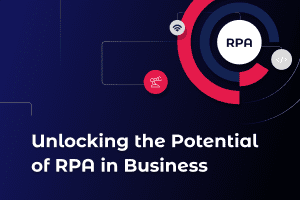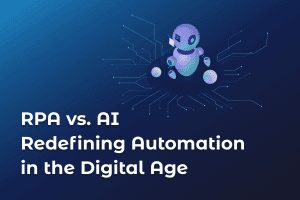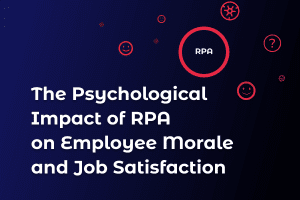Contents
- Key Factors Influencing RPA Costs
- Evaluating The Cost of Automation – An In-Depth Analysis
- Real-World Examples of RPA Costs
- RPA Solution Examples
- RPA Cost – Infrastructure Costs
- RPA Bot Services and Maintenance
- Cost of RPA Integrations
- The Key Benefits RPA Offers to Businesses
- How to Reduce RPA Implementation Costs and Achieve ROI Faster
- Conclusion
Cost of robotic process automation
Understanding the financial outlay required for implementing Robotic Process Automation (RPA) is crucial for businesses considering this technology. RPA has revolutionized the way companies operate, offering significant efficiency improvements, cost savings, and enhanced accuracy. However, the investment involved can vary widely based on several factors. This blog post delves into the different cost components associated with RPA, offering an in-depth analysis to help businesses make informed decisions.
Key Factors Influencing RPA Costs
RPA implementation costs are shaped by several critical factors:
- Complexity and Number of Processes: Automating a single process might cost anywhere from $4,000 for simple tasks to over $100,000 for complex workflows involving multiple systems.
- Choice of RPA Tools: Entry-level subscriptions for UiPath start at $3,000 annually, while Automation Anywhere offers community editions at no cost with premium services scaling up based on usage.
- Vendor Pricing Models: RPA vendors typically offer pricing models that can vary dramatically, with some charging per bot at rates that range from $1,000 to $15,000 annually.
- Customization Needs: Customizing RPA solutions to fit unique business processes can double or even triple initial costs.
- Ongoing Maintenance: Expect to allocate 15%-20% of your initial investment annually towards maintenance and updates.
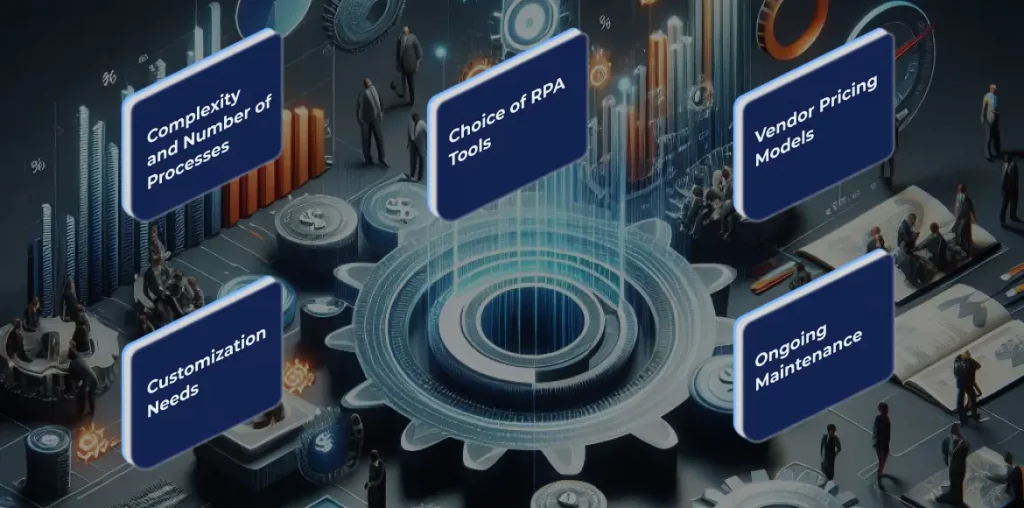
Evaluating The Cost of Automation – An In-Depth Analysis
The Price of RPA Tools
Selecting an RPA tool is perhaps the first substantial financial decision a business will make on its automation journey. The market leaders, such as UiPath, Automation Anywhere, and Blue Prism, offer varying pricing tiers suitable for businesses of all sizes. For small to medium-sized businesses, starting with a tool that offers a free trial or a community edition can be a cost-effective way to explore RPA’s benefits.
RPA Consulting Costs
Before diving into RPA, consulting with experts can provide a roadmap and clear strategy, ensuring that businesses avoid common pitfalls. Depending on the consultancy’s reputation and the project’s scope, initial consulting fees can range from $20,000 to $50,000. This phase is crucial for setting clear objectives, selecting the right processes for automation, and understanding integration complexities.
Configuration and Customization Costs
The initial setup of RPA involves configuring the software to meet specific business requirements, which can vary widely in cost. For medium complexity processes, businesses might expect to invest between $10,000 and $50,000. This stage is critical for ensuring that the RPA bots operate efficiently and accurately within the existing IT infrastructure.
Training and Empowerment
For RPA to deliver its full potential, staff must be trained not only on how to use the software but also on how to identify and design new automation opportunities. Training programs can range from online courses at a few hundred dollars per person to comprehensive in-person training sessions costing up to $4,000 per participant.
Real-World Examples of RPA Costs
Illustrating the cost with real-world applications can provide a clearer perspective:
- Finance and Accounting: Automating invoice processing might cost between $30,000 and $60,000 initially but can save hundreds of hours annually, translating into significant long-term savings. Beyond time and cost efficiency, this automation enhances accuracy in financial reporting and compliance, reducing the risk of costly errors and fines. Companies also benefit from improved vendor relationships due to timely payments facilitated by automation.
- HR Onboarding: Implementing an RPA solution to streamline the onboarding process could range from $20,000 to $40,000, drastically reducing manual workloads and improving employee experiences. Additionally, this investment contributes to a more engaging onboarding experience, fostering a positive first impression and potentially boosting long-term employee retention rates. The automation of routine onboarding tasks enables HR professionals to focus more on strategic initiatives, like talent development and workplace culture enhancement.
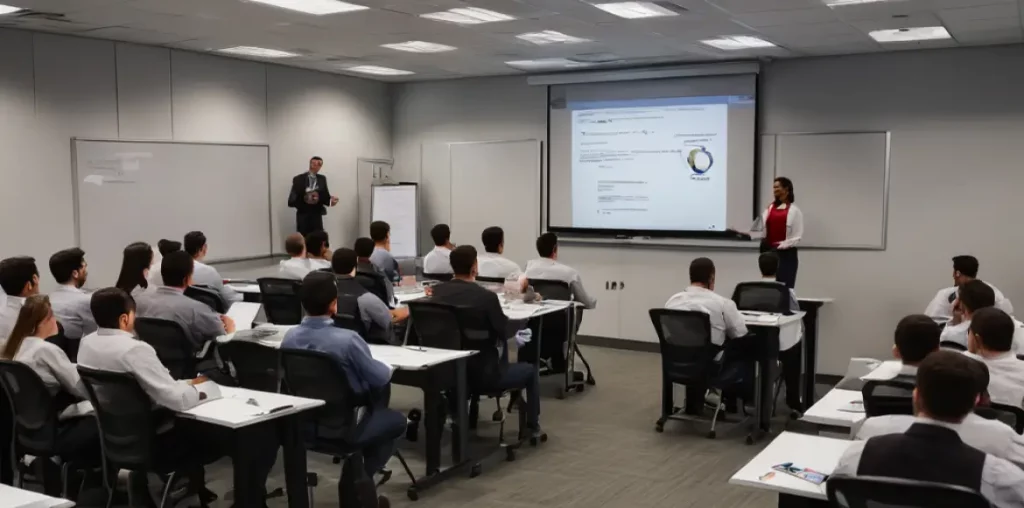
RPA Solution Examples
- Patient Appointment Scheduling: Automating patient scheduling can reduce administrative burdens and improve patient satisfaction. This solution not only streamlines the scheduling process, making it faster and more reliable but also offers patients the convenience of scheduling appointments outside of traditional office hours. Moreover, it enables healthcare providers to optimize their schedules, reducing idle times and increasing the number of patients they can see, thereby boosting revenue and operational efficiency.
- Document Processing System for Telecom: Automating document handling processes increases efficiency and reduces errors in customer service operations. Beyond the immediate benefits of speed and accuracy, this automation allows telecom companies to respond to customer inquiries and process applications much faster, enhancing overall customer experience and loyalty. It also frees up staff to focus on more complex tasks that require human intervention, such as handling escalated customer issues or developing new services, contributing to innovation and competitive advantage in a fast-paced industry.
RPA Cost – Infrastructure Costs
Infrastructure costs are a crucial part of the total investment in RPA. They include servers, cloud services, and other hardware necessary to support RPA bots. These expenses vary depending on the deployment model chosen, whether on-premises or cloud-based, each with distinct advantages and considerations.
On-premises deployment: usually incurs higher upfront costs due to the need for dedicated servers and hardware. However, this model gives businesses more control over their data and infrastructure, which is crucial in industries with strict data security and privacy regulations. It’s important to consider not only the initial equipment purchase but also ongoing maintenance, energy consumption, and eventual upgrades.
Cloud-Based Deployment: Choosing cloud services can significantly lower initial infrastructure costs by eliminating the need for substantial hardware investments. Cloud-based RPA solutions provide scalability and flexibility, enabling businesses to adjust their usage based on current needs and pay only for what they use. Although this model can lead to cost savings over time, it’s essential to consider the recurring subscription fees and the potential costs associated with data transfer and storage on the cloud.
Regardless of the chosen deployment model, businesses must also factor in the costs associated with securing the RPA infrastructure. Implementing strong cybersecurity measures is crucial for safeguarding sensitive data and maintaining the integrity of automated processes. In addition, training IT staff to manage and maintain the RPA infrastructure is essential for minimizing downtime and ensuring the smooth operation of bots.
RPA Bot Services and Maintenance
Ensuring the efficient operation of RPA bots over time necessitates regular maintenance and updates. These activities are crucial for adapting bots to changes in business processes, regulatory requirements, and IT infrastructure. Maintenance costs, while variable, are a significant aspect of the total cost of ownership and largely depend on the service level agreement (SLA) established with the RPA provider.
- Types of Maintenance Services: Maintenance can range from basic software updates and bug fixes to more comprehensive services, including process optimization and bot reconfiguration to match evolving business needs. The complexity of the maintenance required will influence the overall costs.
- Adapting to Process Changes: As business processes evolve, RPA bots may require adjustments to ensure they continue to operate as intended. This might involve modifying bot workflows, integrating new data sources, or updating decision logic. The agility of RPA maintenance services plays a critical role in supporting business growth and transformation.
- Cost Implications: While some RPA vendors offer maintenance as part of their subscription models, others may charge additional fees for extended services. Costs can also vary based on the number of bots in operation, the frequency of required updates, and the level of customization of the RPA solutions. Businesses should negotiate maintenance terms upfront to secure favorable rates and ensure clarity on what services are included.
- Self-Maintenance Capabilities: Some RPA platforms provide tools and interfaces that allow businesses to perform certain maintenance tasks in-house, such as minor adjustments or updates. Investing in training for internal teams to handle routine maintenance can be a cost-effective strategy, reducing reliance on external providers for every issue that arises.
- Strategic Maintenance Planning: Proactive maintenance planning, including regular reviews of bot performance and alignment with business objectives, can help organizations anticipate needs for adjustments, budget accordingly, and avoid costly downtime. Establishing a strategic partnership with the RPA provider can also ensure priority support and access to the latest features and improvements.
Cost of RPA Integrations
Integrating Robotic Process Automation (RPA) with existing systems is crucial to streamline operations. However, this process can introduce additional costs depending on the complexity of the existing IT landscape and the specific requirements of the RPA tasks. Therefore, businesses must understand these costs to accurately budget for their RPA initiatives.
- Integration Complexity: Integrating RPA with existing systems can vary in complexity. Simple integrations, such as connecting RPA bots to a single software application using well-documented APIs, may incur minimal costs. However, integrating with legacy systems or complex IT environments lacking API support may require custom development work, which can significantly increase expenses.
- Custom Development Work: When pre-made RPA solutions are insufficient for specific business requirements, custom development is necessary. This may involve creating unique scripts or using middleware to enable communication between RPA bots and existing systems. The expenses associated with custom development will vary depending on the project’s scope, the technologies involved, and the expertise required.
- Software Licenses and Tools: Some integrations may require additional software licenses or specialized tools to bridge the gap between RPA bots and the target systems. This could include licenses for API management platforms, integration frameworks, or additional RPA bot licenses if the integration expands the scope of automation. The cost of these licenses and tools adds to the overall investment in RPA.
- Professional Services: Many businesses may choose to hire professional services from RPA vendors or third-party consultants to manage complex integrations. These services can provide the expertise needed to ensure seamless integration but come at a premium. The fees for professional services will vary based on the provider’s rates, the project’s duration, and the level of technical difficulty.
Additionally, ongoing support and updates are crucial for maintaining the integration’s effectiveness. After successful integration, it may be necessary to provide ongoing support and updates to maintain optimal performance. This is particularly important as business processes or IT environments evolve. These ongoing costs should be factored into the total cost of ownership for RPA solutions, as they can impact long-term value and effectiveness.
The Key Benefits RPA Offers to Businesses
Although there are certain costs associated with the initial setup and ongoing maintenance of Robotic Process Automation (RPA), the benefits it brings to businesses are substantial and multifaceted. RPA not only contributes to immediate operational improvements but also supports long-term strategic goals:
- Increased Efficiency: By automating repetitive and time-consuming tasks, RPA significantly enhances operational efficiency. By freeing employees from mundane tasks, they can focus on more valuable activities such as customer engagement, strategic planning, and innovation. This shift not only boosts productivity but also increases job satisfaction as employees engage in more meaningful work.
- Cost Savings: By automating routine processes, businesses can significantly reduce operational expenses. This is achieved through decreased labor costs, minimized expenses related to errors, and optimized resource allocation. As more processes are automated and efficiencies are realized over time, RPA can lead to significant financial savings. Some businesses report a return on investment within a few months of implementation.
- Improved Accuracy: RPA bots are designed to follow precise rules and processes, reducing the likelihood of errors that can occur with manual processing. This increased accuracy is particularly beneficial in areas such as data entry, invoice processing, and compliance reporting, where mistakes can lead to financial losses or regulatory penalties. Enhanced data quality also supports better decision-making, as businesses can rely on the integrity of their information.
- Scalability: RPA allows businesses to scale their operations flexibly and efficiently. As demand fluctuates or the company grows, RPA systems can be adjusted to handle varying volumes of work without the need to hire additional staff or significantly increase operational costs. This scalability ensures that businesses can respond quickly to market changes and growth opportunities without compromising service quality or efficiency.
- Competitive Advantage: Implementing RPA can provide businesses with a competitive edge. By streamlining operations and improving service delivery, companies can offer higher levels of customer satisfaction, faster turnaround times, and enhanced product offerings. Moreover, the insights gained from automated processes can inform strategic decisions, helping businesses to innovate and stay ahead of competitors.
- Compliance and Security: RPA can play a crucial role in ensuring compliance with regulatory requirements and enhancing data security. Automating compliance processes and maintaining detailed logs of all actions taken by bots can simplify audit processes and reduce compliance risks. RPA can also help enforce data processing rules and permissions, contributing to stronger data security frameworks.
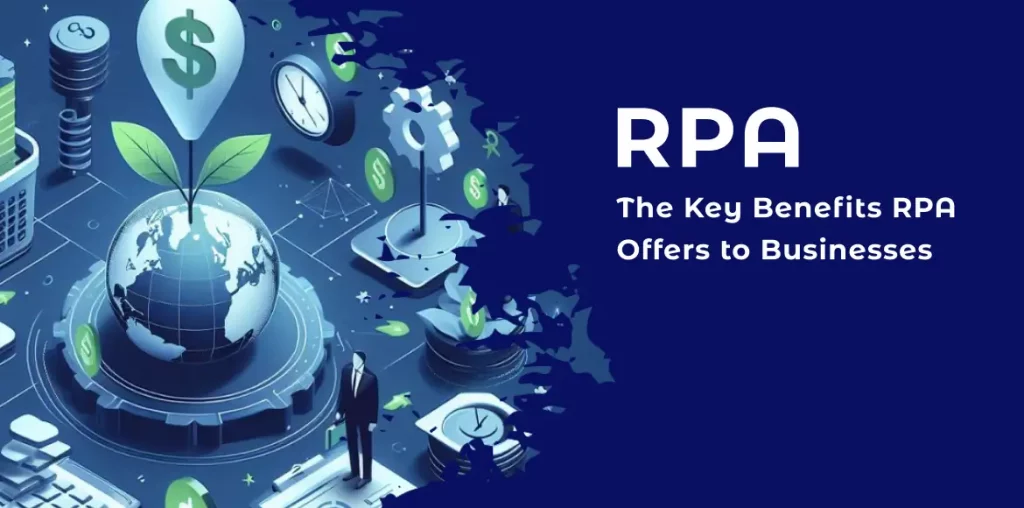
How to Reduce RPA Implementation Costs and Achieve ROI Faster
Adopting a strategic approach to Robotic Process Automation (RPA) can significantly minimize costs and accelerate the return on investment (ROI). Here are refined strategies and considerations for organizations looking to optimize their RPA investments:
Prioritize High-ROI Processes
Identifying and prioritizing processes that are most suitable for automation and offer quick wins is critical. Look for tasks that are high volume, repetitive, and rule-based. Automating these processes first can provide immediate efficiency gains and cost savings, contributing to a quicker ROI. Conducting a thorough process analysis to pinpoint these opportunities is a foundational step in the RPA journey.
Opt for Scalable Solutions
Selecting RPA tools and platforms that can scale with your business is essential for long-term success. Scalable solutions allow you to start small and expand your RPA footprint as you realize the benefits and identify more automation opportunities. This approach not only helps in managing initial costs but also ensures that your investment remains aligned with business growth and changing needs.
Leverage Cloud Solutions
Cloud-based RPA solutions offer a way to reduce upfront infrastructure costs and simplify maintenance. By leveraging the cloud, businesses can benefit from the flexibility of subscription-based pricing models, which often include updates and support. Additionally, cloud platforms facilitate easier scaling of RPA initiatives and can provide advanced security features to protect sensitive data.
Implement a Center of Excellence (CoE)
Establishing an RPA Center of Excellence (CoE) can drive efficiencies across the organization’s RPA initiatives. A CoE serves as a centralized unit that standardizes RPA practices, provides expertise, and fosters knowledge sharing. This strategic approach can streamline RPA deployments, reduce duplication of efforts, and ensure that best practices are followed, ultimately lowering costs and improving ROI.
Continuous Monitoring and Optimization
RPA requires ongoing monitoring and optimization to ensure bots are performing as expected and adapting to any process changes. Implementing analytics and performance monitoring tools can help identify bottlenecks or inefficiencies, allowing for timely adjustments. Regularly reviewing and refining RPA operations can prevent costly downtime and enhance the overall effectiveness of automation efforts.
RPA Return of Investment (ROI)
Calculating the ROI of RPA projects involves a detailed analysis of both direct and indirect costs against the tangible and intangible benefits realized. Successful RPA implementations often achieve a positive ROI within the first year, attributed to reduced operational costs, increased productivity, and improved accuracy. Documenting these outcomes can aid in justifying further investments in RPA.
Navigating Comparison Difficulties
The challenges of comparing RPA costs stem from the diverse pricing models offered by vendors and the unique nature of each business’s processes. To navigate these difficulties, businesses should focus on total cost of ownership (TCO), considering both initial setup costs and ongoing expenses. Engaging with multiple vendors to obtain detailed quotes and conducting pilot projects can also provide valuable insights into the potential costs and benefits of different RPA solutions.
Addressing Inflexible Pricing Models and Measurement Challenges
The variability and sometimes inflexibility of vendor pricing models highlight the importance of conducting thorough market research and negotiations to secure terms that meet your business’s specific needs. Additionally, the lack of standardization in measuring RPA services necessitates a clear understanding of the value each vendor offers, beyond just the price, to make informed decisions.
Conclusion
Determining the cost of RPA involves considering various factors, including software licenses, vendor pricing models, and ongoing maintenance costs. By carefully evaluating these elements and focusing on high-ROI processes, businesses can effectively manage costs and achieve significant benefits from RPA implementation.
For further insights into RPA solutions and strategies to optimize your business processes, explore our range of services at Scimus.
Discover more about RPA tools and vendor comparisons at UiPath, Automation Anywhere, and Microsoft Power Automate.

